Tools Required
| • | J 43828 Ball Joint Separator |
| • | J 45341 Rear Wheel Drive Shaft Removal Tool |
| • | SA91100C Tie Rod Separator |
| • | SA9127E Gage Bar Set |
| • | SA9805E Fuel Line Separator |
Removal Procedure
- Disconnect the negative battery cable.
- Remove the battery cover and battery.
- Remove the air cleaner assembly. Refer to Air Cleaner Assembly Replacement in Engine Controls - 3.0L (L81).
- Remove the underhood fuse block (UHFB) fuse cover by separating the clips on each side.
- Remove the UHFB fuse cover.
- Remove the inner UHFB fuse cover.
- Loosen the 3 connector through bolts at the top of the UHFB.
- Remove the battery and electronic power steering feed wire connection nut and remove the wire from the UHFB stud.
- Release the tabs on each side of the UHFB with a screwdriver.
- Raise the UHFB from the connectors. Disconnect the side electrical connectors.
- Remove the UHFB from the vehicle.
- Remove the battery cable and harness attachment clips on the side of the battery tray/UHFB bracket assembly.
- Remove the main connectors from the UHFB housing.
- Lay the battery positive cable over the engine. The battery cables will be removed with the powertrain assembly.
- Disconnect the electrical connectors at the transaxle controller (TCM) near the brake the booster.
- Disconnect the electrical connector for the rear O2 sensor and cut the tie strap to the heater hoses.
- Remove the vacuum hose from the check valve from the brake booster and lay across the engine.
- Disconnect the main engine harness (gray connector) and lay over the engine assembly. This will allow the engine harness to be removed with the powertrain.
- Remove the UHFB and battery tray bolts.
- Remove the UHFB and the battery tray and ground wire.
- Disconnect the shiftier cable from the PRNDL switch by using a screwdriver. Slightly pry between the shiftier cable plastic retainer and the PRNDL switch.
- Drain the coolant. Refer to Cooling System Draining and Filling in Engine Cooling.
- Disconnect the upper radiator hose at the engine cylinder head.
- Disconnect the lower radiator hose at the radiator.
- Disconnect the De-gas hose at the surge tank.
- Disconnect the surge hose at the bottom of the surge tank.
- Disconnect the heater hoses from the heater core at the front of the dash.
- Relieve the fuel system pressure using the SA9127E Refer to Fuel Pressure Relief
- Disconnect the SA9127E after the pressure has been relieved.
- Disconnect the fuel transfer line at the quick connect from the fuel line using the SA9805E or equivalent.
- Disconnect the purge hoses at the purge solenoid.
- Using the long tie straps, secure the radiator/condenser fan assembly to the body.
- Perform an evacuation of the A/C system.
- Disconnect the A/C transducer and compressor.
- Raise the vehicle.
- Remove the front LH wheel . Refer to Tire and Wheel Removal and Installation in Tires and Wheels.
- Install a piece of hardwood 1 inch X 2 inch X 4 inch between the transaxle case and the engine cradle assembly.
- Remove the front RH wheel and tire assembly. Refer to Tire and Wheel Removal and Installation in Tires and Wheels.
- Remove the wheel inner splash shield.
- Remove the compressor and support the A/C line.
- Remove the push-pins that retain the air deflector assembly to the cradle.
- Disconnect the transaxle lines from the transaxle.
- Remove the exhaust manifold to pipe flange bolts.
- Remove the exhaust pipe to muffler pipe nuts.
- Remove the converter pipe assembly and support the muffler and pipe assembly.
- Remove the propshaft bolts at the power take unit (PTU).
- Remove the propshaft bolt at the rear axle assembly.
- Remove the propshaft support bracket to body bolts.
- Remove the propshaft assembly.
- Remove the shiftier cable bracket assembly nut and free the bracket with cable from the transaxle.
- Remove the steering gear to intermediate shaft bolt.
- Remove the tie rod to knuckle nuts.
- Separate the tie rod assemblies form the knuckle assemblies using the SA91100C , or equivalent.
- Remove the lower control arm cotter pins and nuts to knuckle assembly.
- Separate the lower controls arms to knuckle assemblies by use the J 43828 , or equivalent.
- Remove the lower stabilizer link nuts to stabilizer bar.
- Disconnect the LH axle shaft assembly from the transaxle.
- Disconnect the RH shaft assembly from the intermediate drive shaft using the J 45341 , or equivalent, with the appropriate slide tool.
- Support the axle shaft by using tie straps.
- Lower the vehicle.
- Remove the RH engine mount to engine bracket bolts. The engine should rest on wood blocks.
- Remove the LH transaxle mount to transaxle bolts. The transaxle should rest on wood blocks.
- Raise the vehicle.
- Position the engine support table under the powertrain assembly.
- With the table positioned, fully raise the table to contact with the powertrain assembly.
- Remove the cradle-to-body bolts.
- Lower the engine table and raise the body on a hoist until the engine/transaxle and cradle assembly is free from the vehicle.
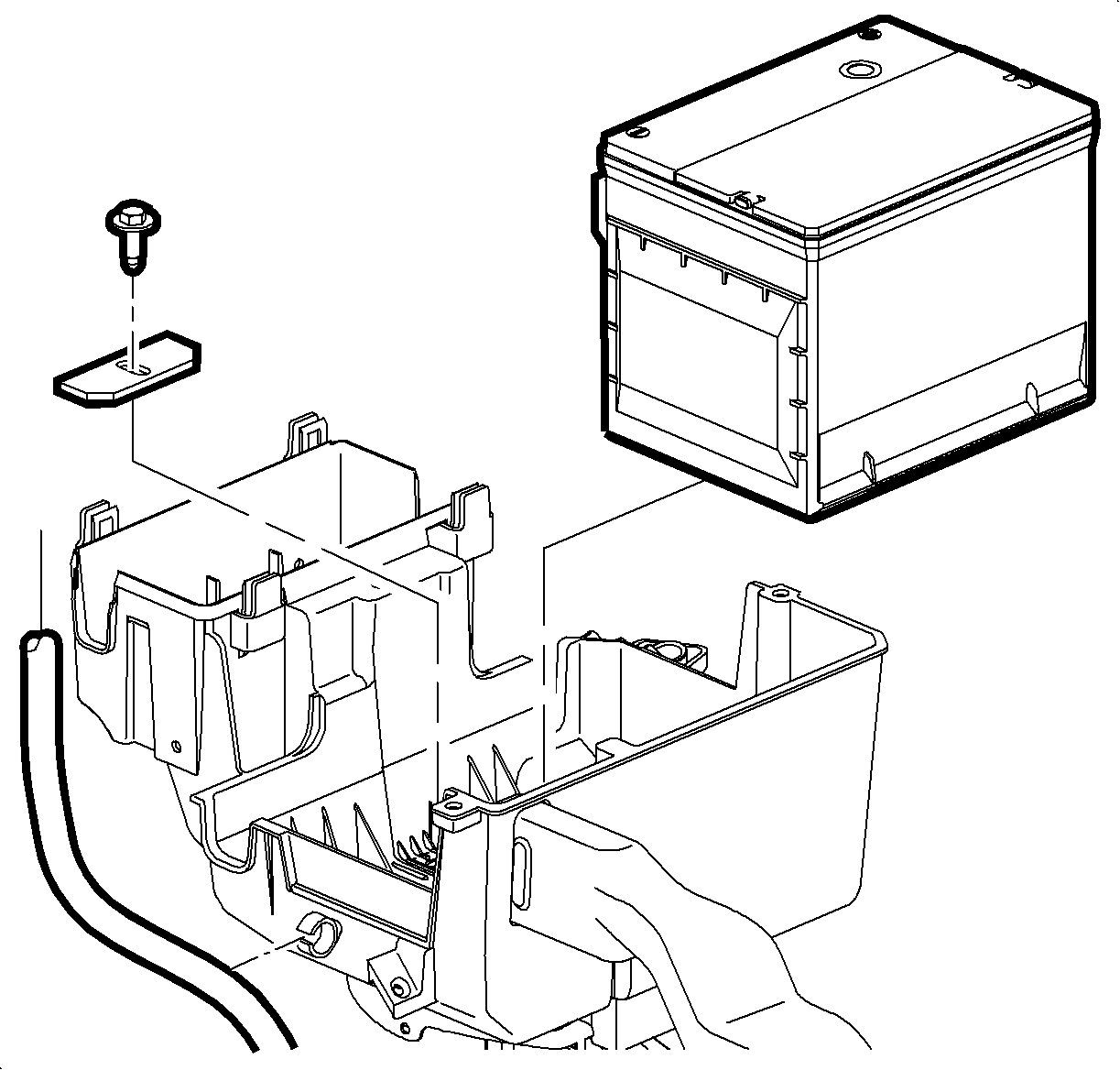
Caution: Ensure that the vehicle is properly supported and squarely positioned. To help avoid personal injury when a vehicle is on a hoist, provide additional support for the vehicle on the opposite end from which the components are being removed.
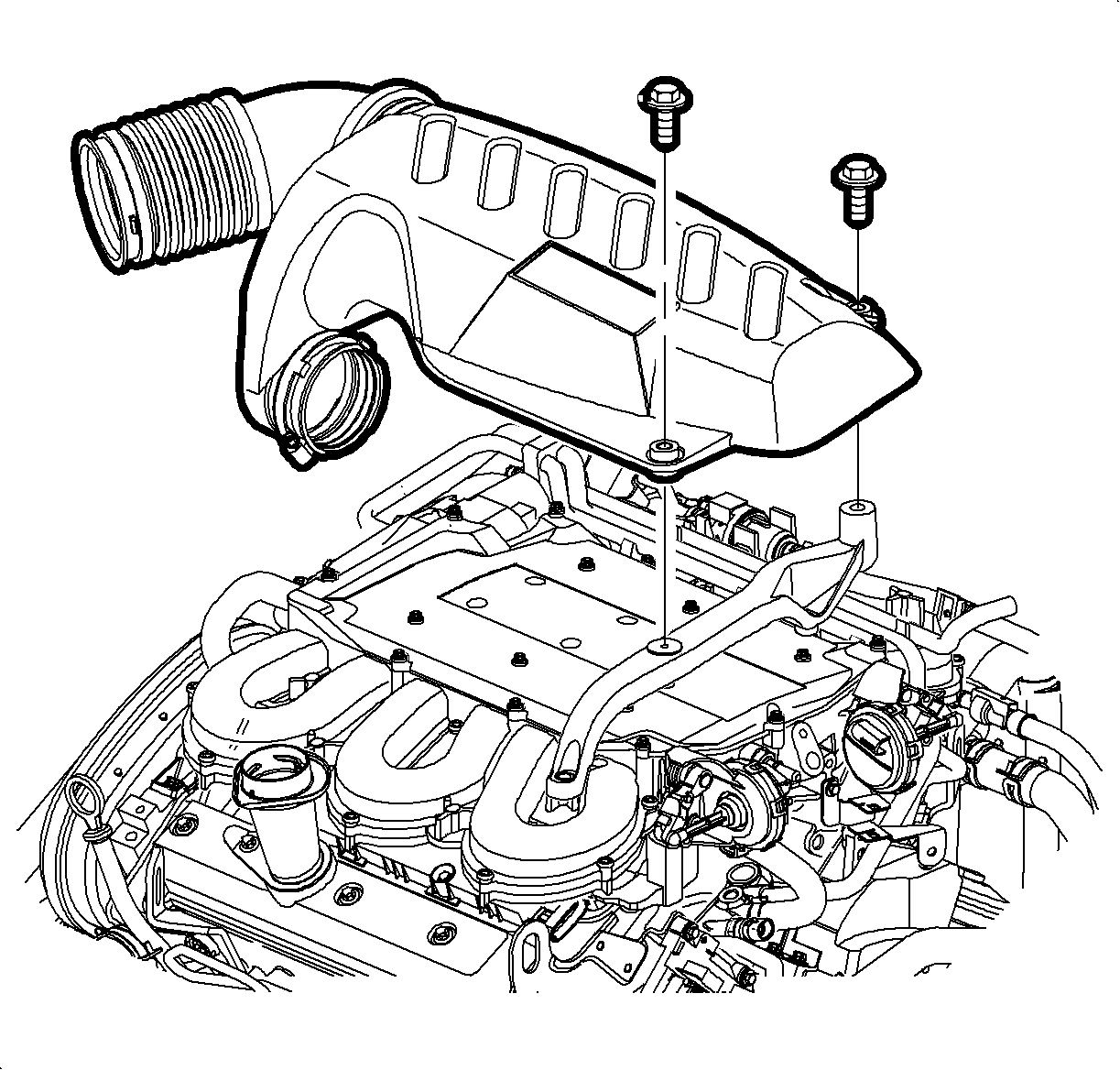
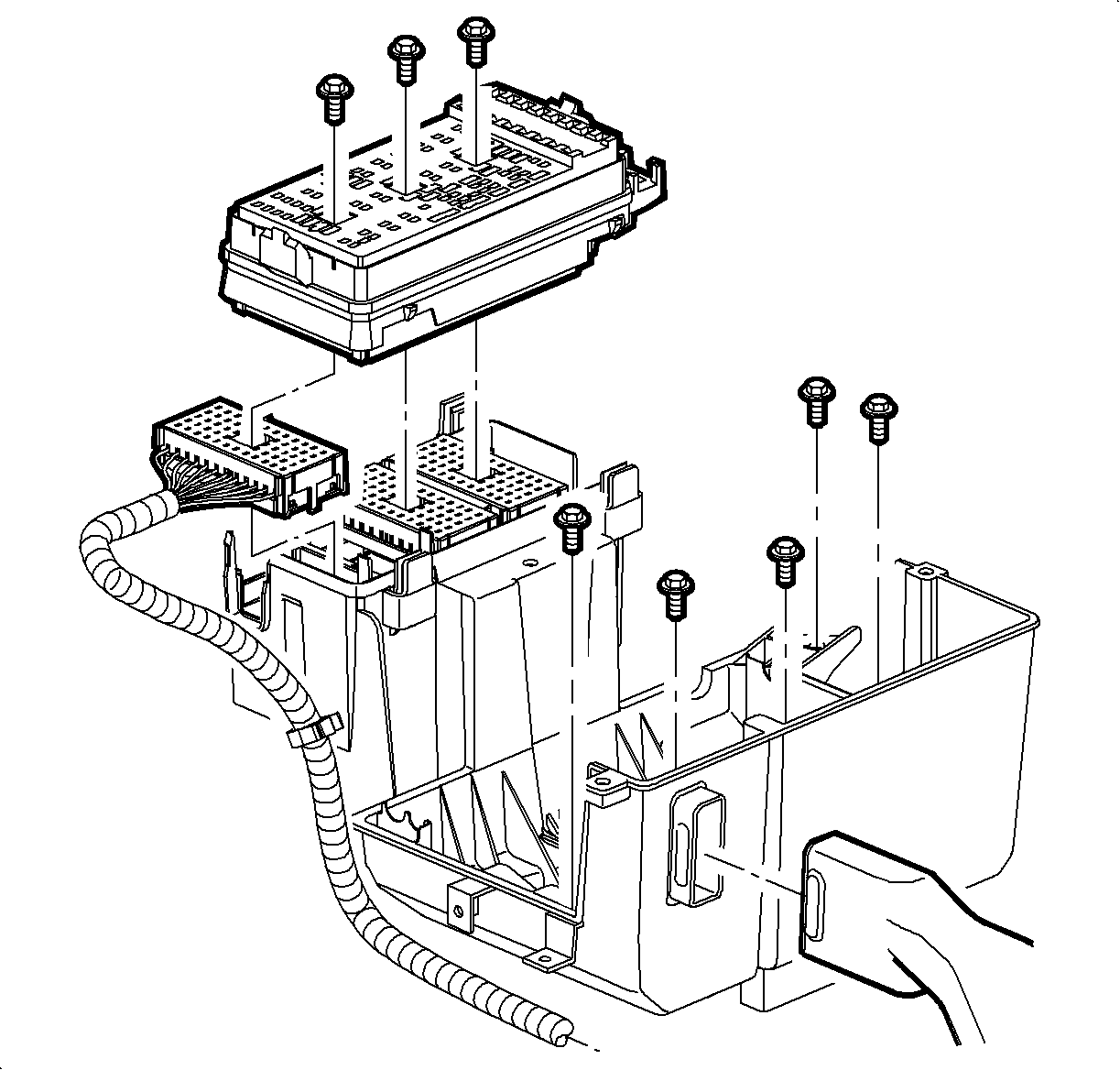
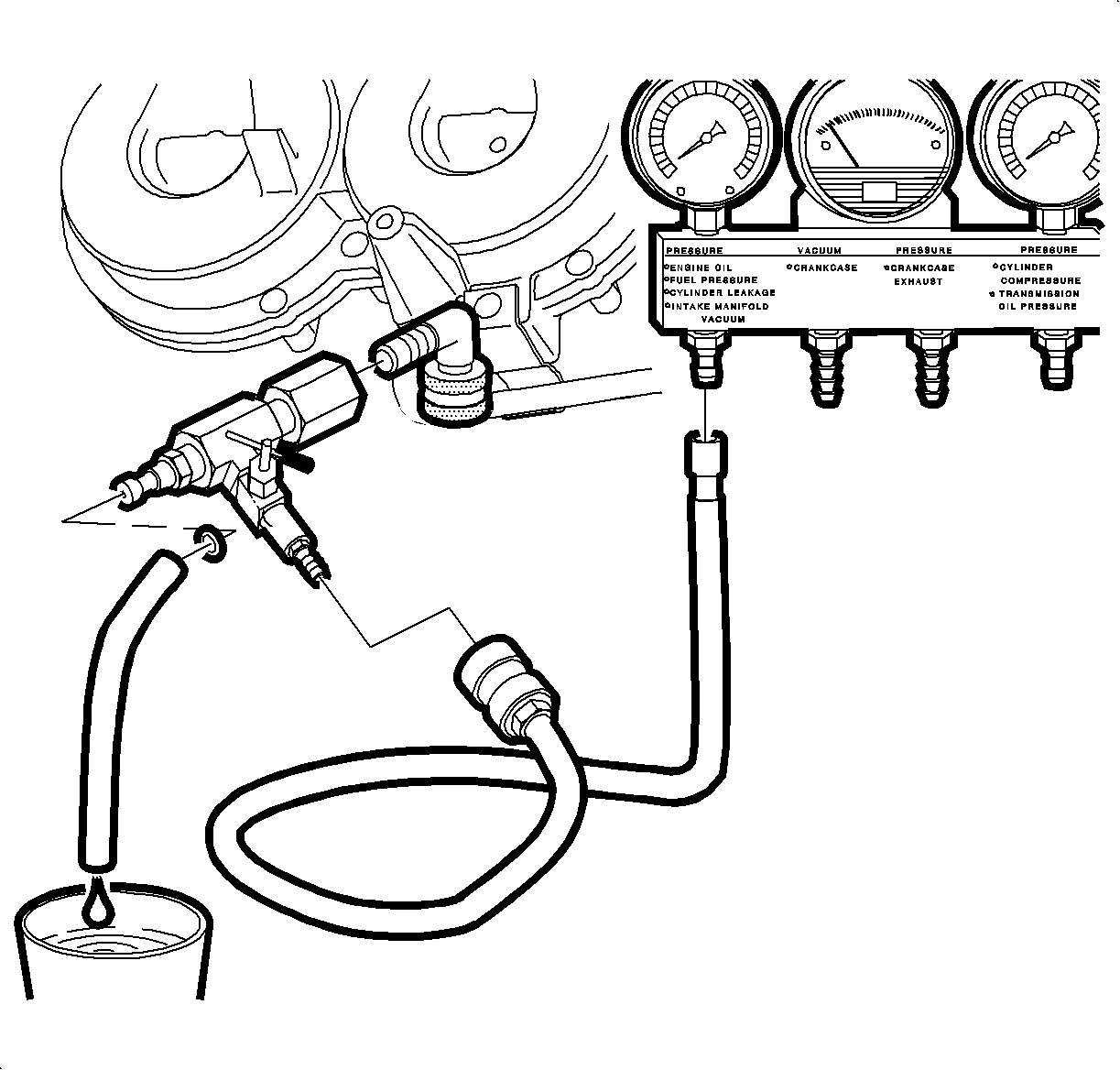
Important: The Radiator/condenser/fan assembly will stay in the vehicle during the engine removal.
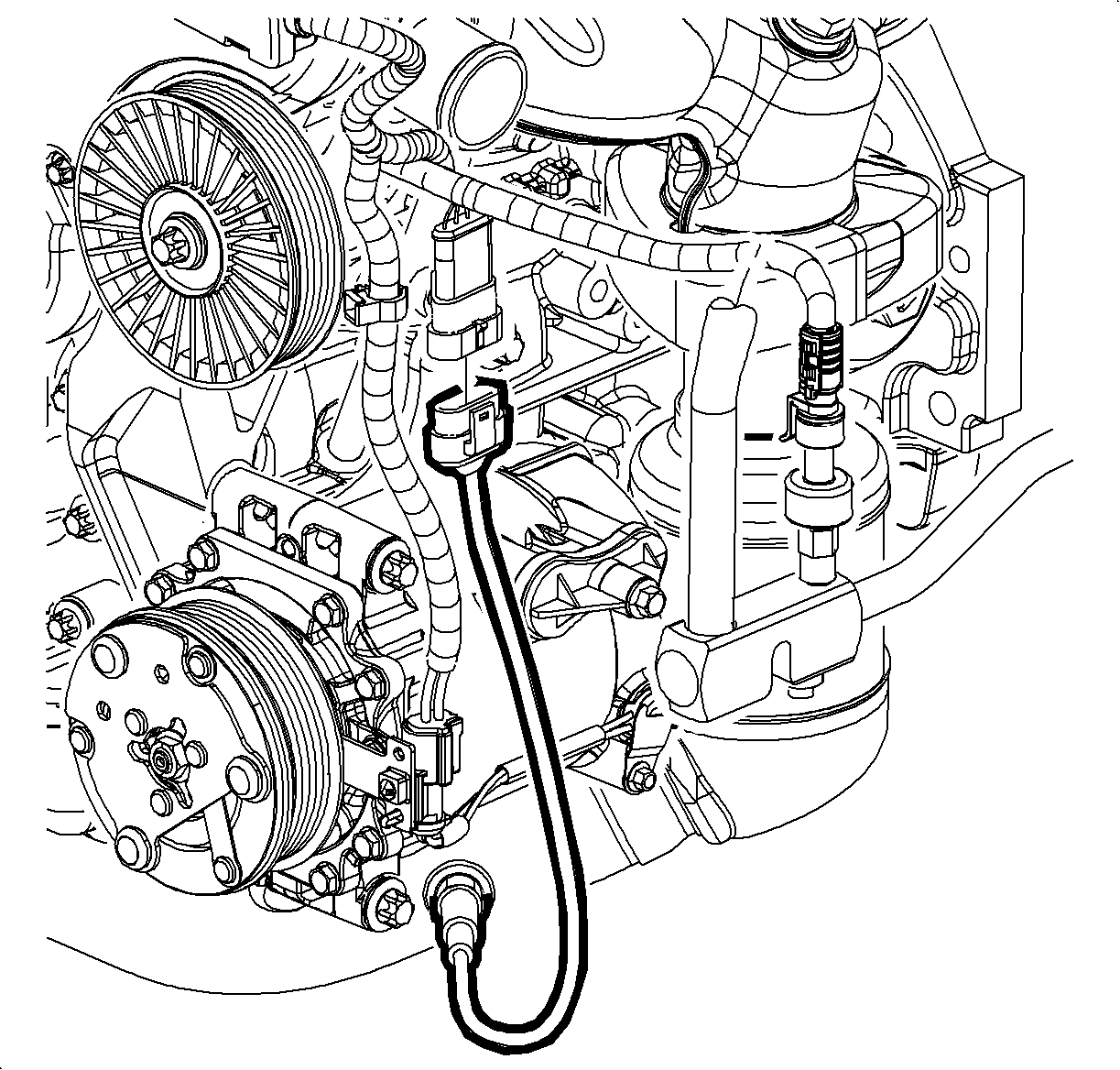
Caution: Ensure that the vehicle is properly supported and squarely positioned. To help avoid personal injury when a vehicle is on a hoist, provide additional support for the vehicle on the opposite end from which the components are being removed.
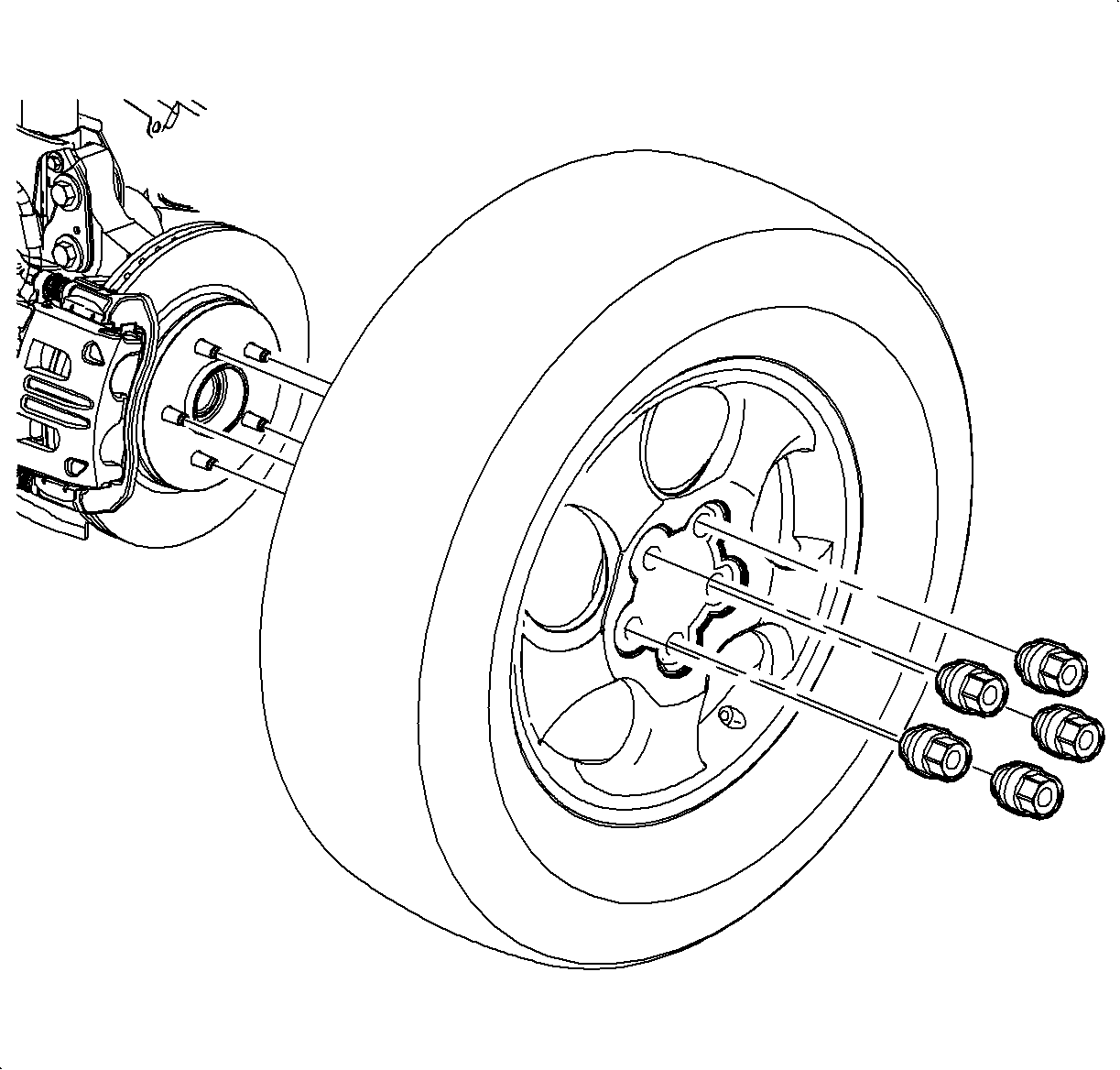
Important: A piece of hardwood should be used between the transaxle case and the cradle assembly. This wood will support the transaxle when the LH mount bolts are removed.
Important: When the transaxle lines are removed, the new seals must be installed into the transaxle to prevent the potential for a leak.
Important: Fluid will leak when the lines are disconnected. Place a dip pan collect the transaxle oil.
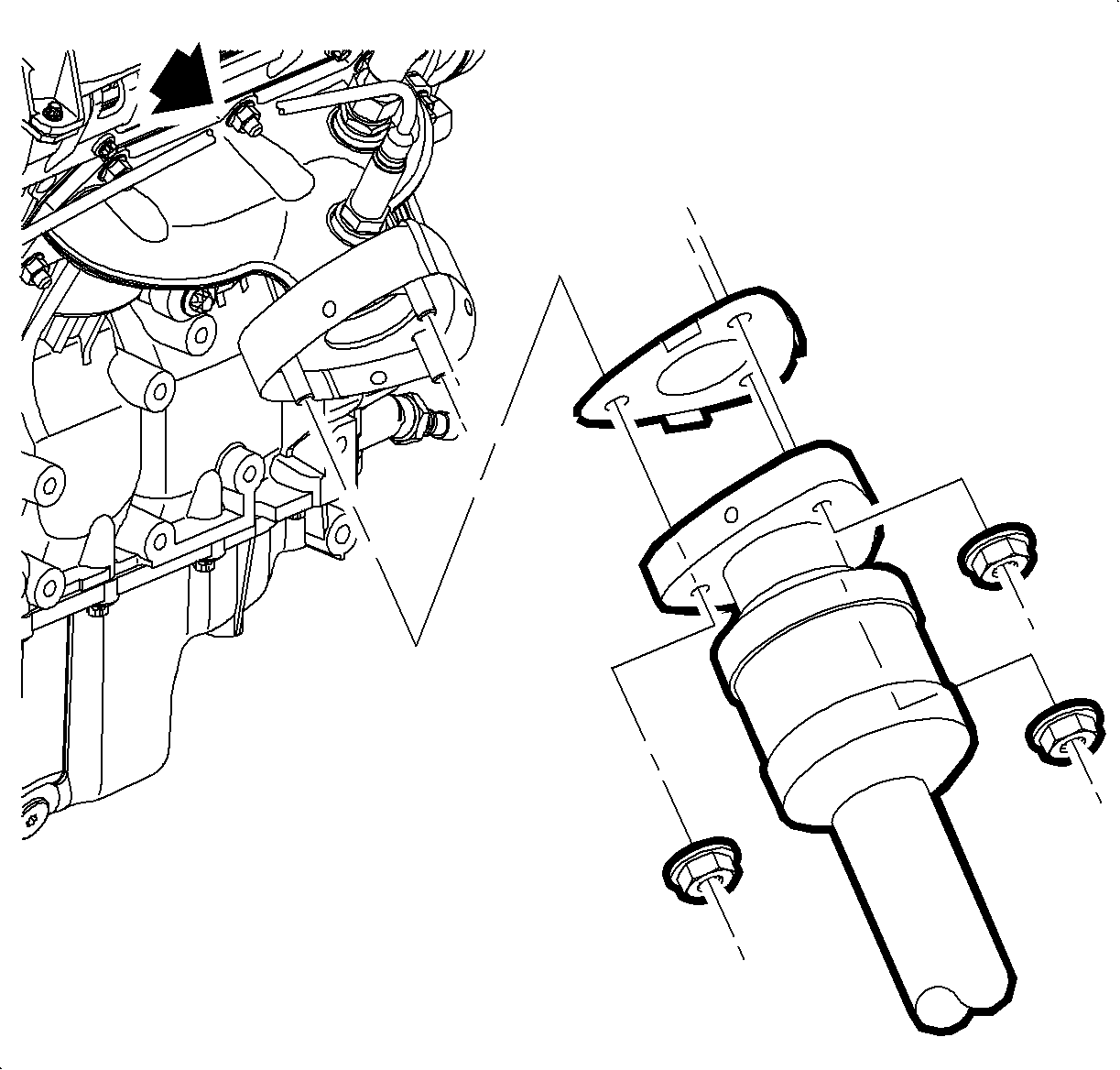
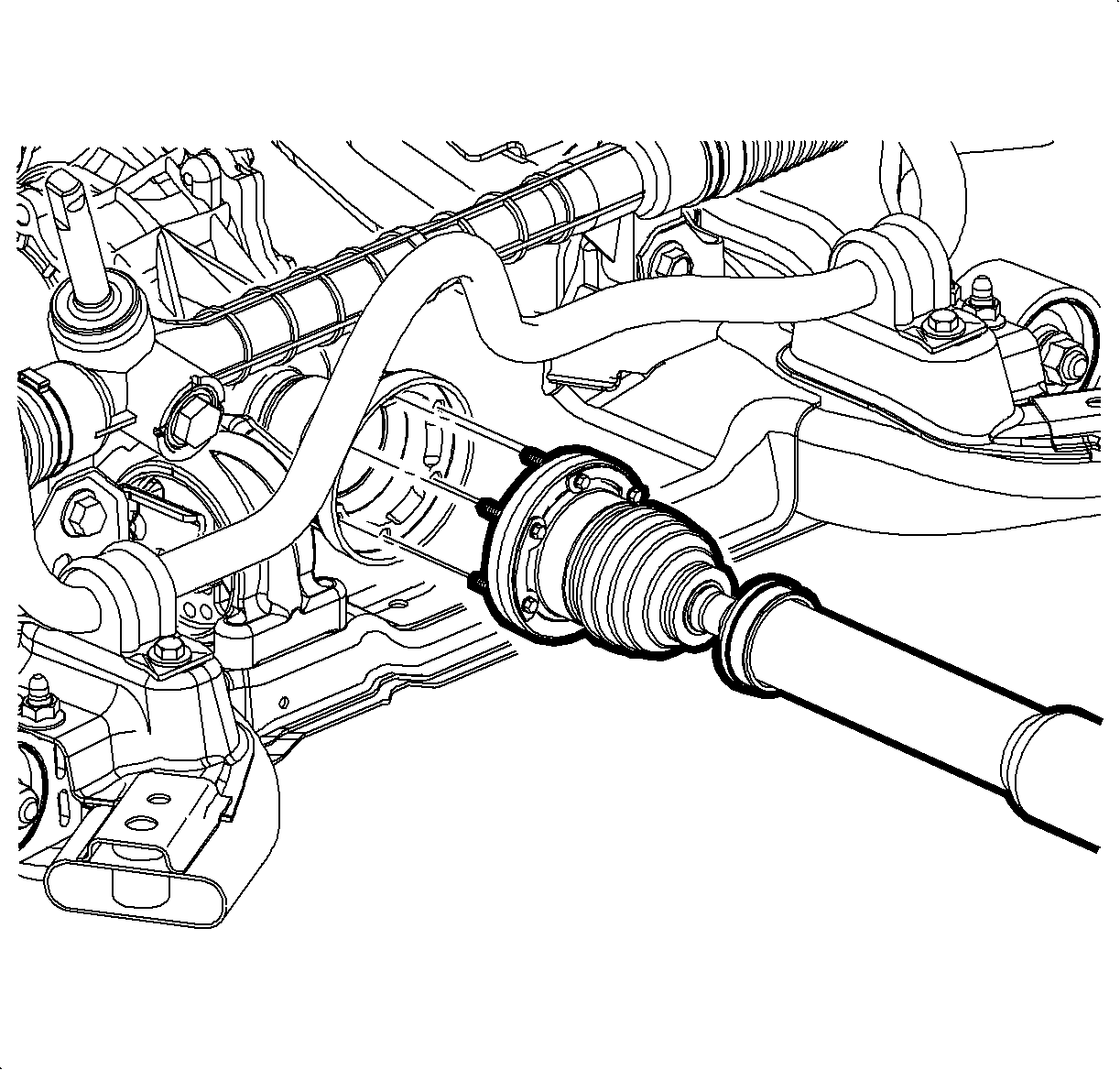
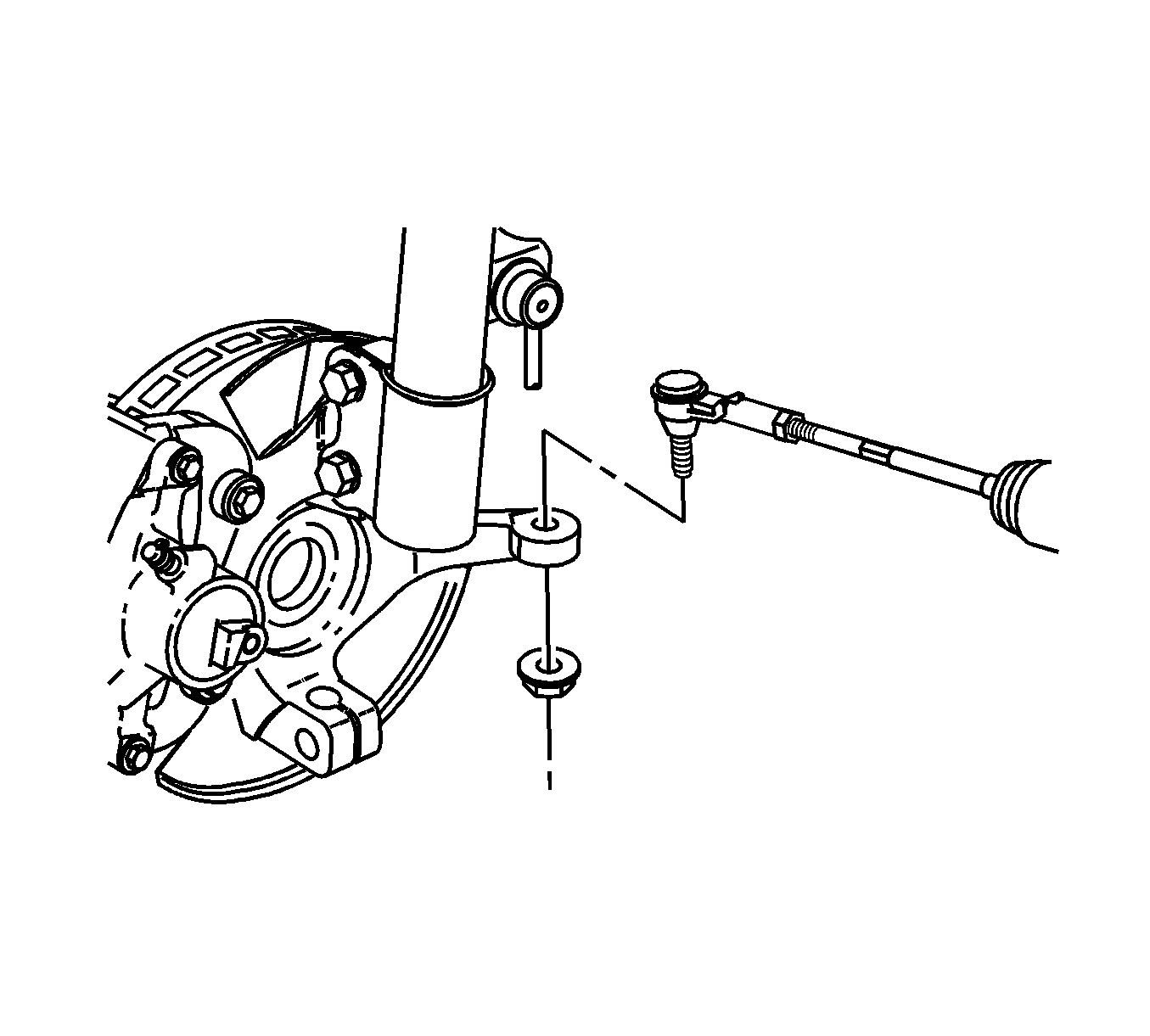
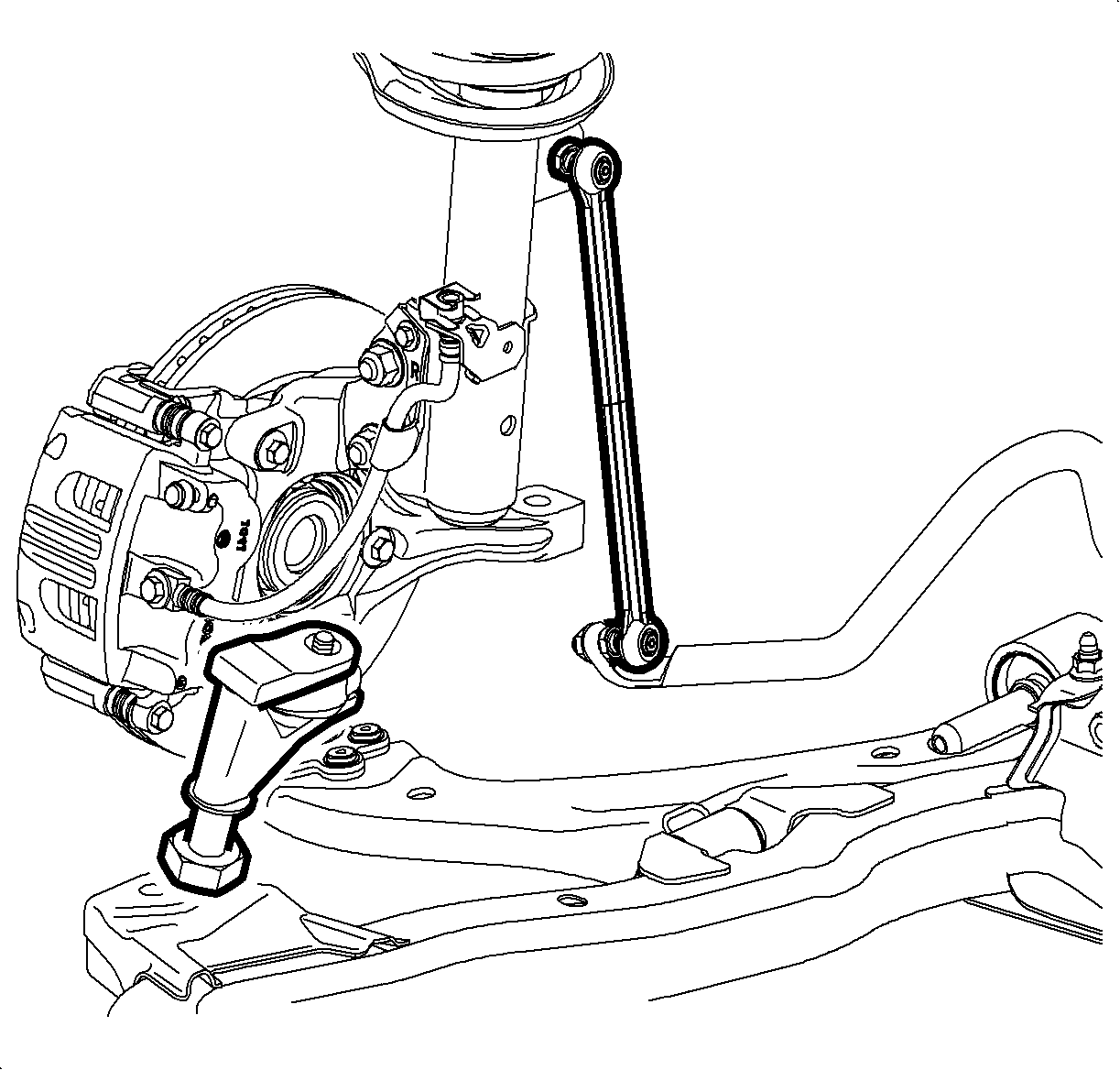
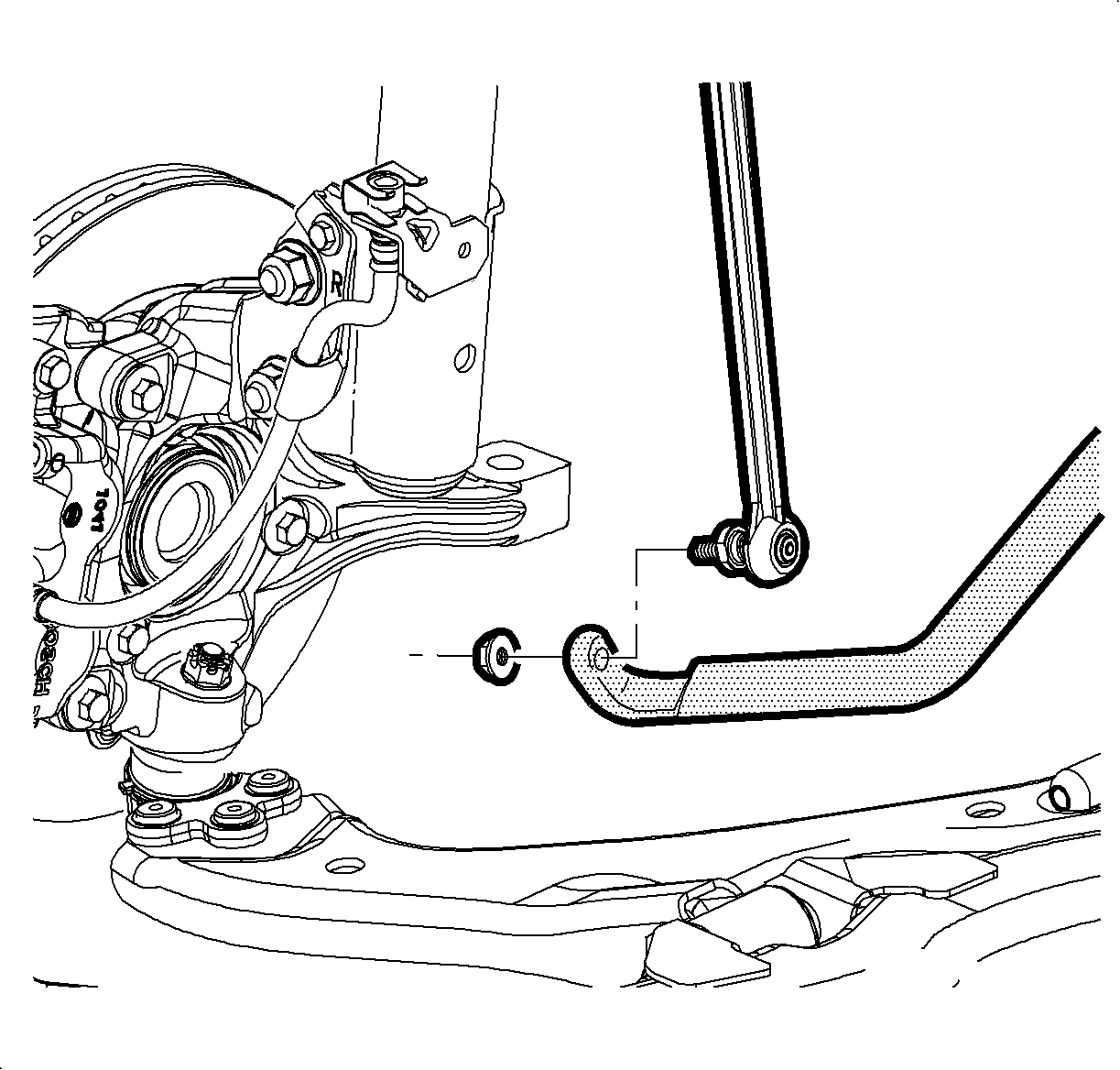
Important: The stabilizer links will stay in the vehicle connected to the strut assembly on engine removal.
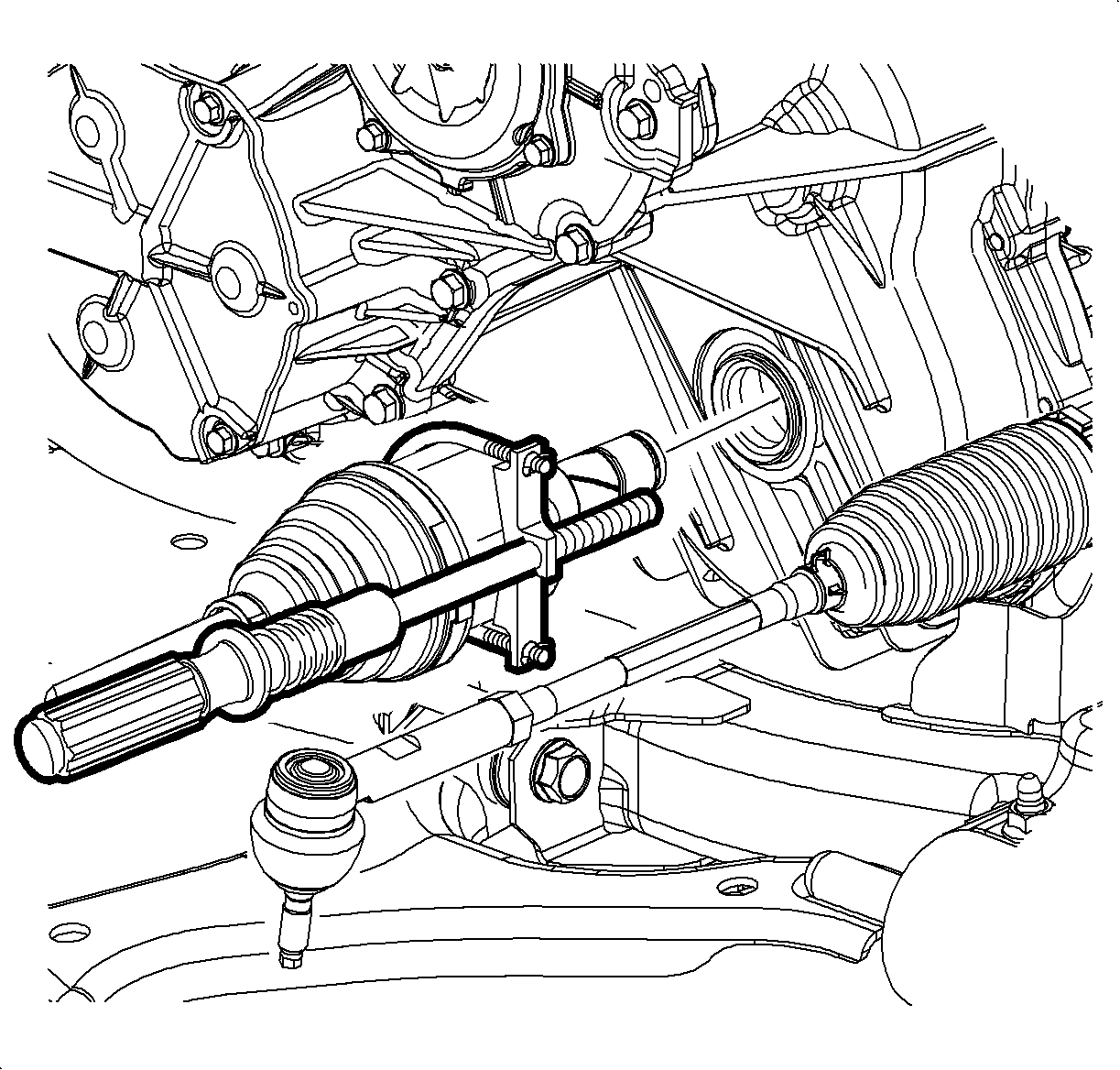

Caution: Ensure that the vehicle is properly supported and squarely positioned. To help avoid personal injury when a vehicle is on a hoist, provide additional support for the vehicle on the opposite end from which the components are being removed.
Important: Blocks of wood can be used between the front of the cradle and oil pan to table to level assembly during removal.
Important: When lowering the engine/transaxle assembly, verify all brake lines, shiftier cable and other components are free during removal.
Installation Procedure
- With the powertrain supported on a jacking table, raise the powertrain into position.
- Raise the powertrain assembly into position. Align the lower radiator alignment pin with the cradle assembly.
- Position the cradle guide pints into location and install new cradle-to-body bolts.
- Lower the vehicle.
- Install the RH engine mount to engine bracket bolts.
- Install the LH transaxle mount to transaxle bolts.
- Lower the vehicle.
- Remove the wood blocks between the cradle and the powertrain.
- Swing the axle shafts into position and fully seat in the transaxle and bearing. Slight taps may be required on the back of the CV axle housing.
- Position the strut assemblies onto the lower control arms.
- Install the lower control arm nut.
- Verify the axles are fully seated.
- Position the stabilizer link into position and install the nut.
- Install the stabilizer nut.
- Install the tie rod end into the strut knuckle assembly.
- Secure the brake line-to-cradle assembly.
- Install the steering shaft-to-intermediate shaft.
- Install the steering shaft-to-intermediate shaft bolt.
- Install the propshaft into position. Hand-tighten the center bearing nuts.
- Install the propshaft into position.
- Install the propshaft-to-PTU bolts.
- Install the propshaft into the rear axle assembly.
- Install the propshaft-to-rear axle bolts.
- Tighten the propshaft support bearing bolts.
- Install the propshaft support strap.
- Install the shiftier cable bracket-to-transaxle.
- Connect the transaxle lines-to-transaxle.
- Install the down pipe-to-intermediate pipe assembly.
- Hand-tighten the nuts.
- Install the gasket and down pipe-to-exhaust manifold.
- Route the O2 harness into position at the heat shield.
- Install the A/C hoses-to-compressor.
- Connect the A/C compressor harness.
- Connect the A/C pressure transducer.
- Attach the front air deflector-to-cradle assembly.
- Install the right and left inner splash shields.
- Install the front wheels. Refer to Tire and Wheel Removal and Installation in Tires and Wheels.
- Lower the vehicle.
- Connect the shiftier cable to the PRNDL switch.
- Adjust the PRNDL switch. Refer to Park/Neutral Position Switch Adjustment in Automatic Transaxle - AF33-5.
- Connect the heater hoses from the heater core at the front of the dash.
- Connect the purge hose at the purge solenoid.
- Connect the fuel transfer line at the quick connect to fuel line.
- Connect the surge hose at the bottom of the surge tank.
- Connect the De-gas hose at the surge tank.
- Connect the lower radiator hose at the coolant pipe.
- Connect the upper radiator hose at the engine cylinder head.
- Install the engine ground to body bolt.
- Install the UHFB and battery tray.
- Install the UHFB and battery tray bolts.
- Route the engine harness into position and install the main engine and body harness connectors into the UHFB housing.
- Snap the connectors into position in the UHFB.
- Connect both electrical connectors underneath the UHFB.
- Install the UHFB into the battery box while aligning the UHFB with the connectors.
- Snap the UHFB into position.
- Tighten the UHFB connector bolts.
- Install the battery and electronic power steering (EPS) feed wire to the UHFB stud and tighten the nut.
- Install the UHFB fuse cover into position.
- Connect the electrical connectors to the TCM
- Install the battery cable and harness attachment clips on the side of the battery tray/UHFB bracket assembly.
- Install the battery and cover.
- Install the brake vacuum hose into the booster.
- Connect the rear O2 sensor connector.
- Tighten the clamp at the air cleaner assembly.
- Connect the negative battery cable.
- Check for the proper oil level. Refer to Engine Oil and Oil Filter Replacement
- Start the engine and fill the transaxle fluid. Refer to Transmission Fluid Replacement in Automatic Transaxle - AF 33-5.
- Fill engine coolant. Refer to Cooling System Draining and Filling in Engine Cooling.
- Check for leaks.
- If excessive engine idle vibration is noted, the engine mount inspection procedure should be performed. Refer to Engine Mount Inspection .
- Charge the A/C system.
- Verify the wheel adjustment is within specifications.
Notice: If the radiator assembly is not properly positioned to the cradle, damage could occur.
Notice: Refer to Fastener Notice in the Preface section.
Important: The cradle-to-body bolts are one-time use fasteners and should be discarded after removal.
Tighten
Tighten the cradle-to-body bolts to 155 N·m
(114 lb ft).
Tighten
Tighten the RH engine mount-to-engine bracket bolts
to 50 N·m (37 lb ft).
Tighten
Tighten the LH engine mount to transaxle bolts to
50 N·m (37 lb ft).
Important: Care should be used to avoid damaging the transaxle and bearing races when the axles are seated.

Tighten
Tighten the stabilizer link-to-strut to 65 N·m
(48 lb ft).
Tighten
Tighten the tie rod-to-knuckle assembly nut to 50 N·m
(37 lb ft).
Tighten
Tighten the steering shaft-to-rack bolt to 34 N·m
(25 lb ft).

Tighten
Tighten the propshaft-to-PTU bolts to 25 N·m
(19 lb ft).
Tighten
Tighten the propshaft-to-rear axle bolts to 50 N·m
(37 lb ft).
Tighten
Tighten the propshaft support bearing bolts to 25 N·m
(19 lb ft).
Tighten
Tighten the propshaft support strap to 25 N·m
(19 lb ft).
Tighten
| • | Tighten the transaxle cooler lines-to-transaxle stud to 20 N·m (15 lb ft). |
| • | Tighten the propshaft support strap to 25 N·m (19 lb ft). |

Tighten
| • | Tighten the down pipe-to-exhaust manifold nuts to 30 N·m (22 lb ft). |
| • | Tighten the down pipe-to-intermediate pipe nuts to 30 N·m (22 lb ft). |

Tighten
Tighten the engine ground-to-body bolt to 20 N·m
(15 lb ft).
Tighten
Tighten the battery tray bolts to 16 N·m
(11 lb ft).
Important: Ensure the engine and body harness are properly positioned to avoid damage to the harness.
Tighten
Tighten the UHFB connector bolts to 20 N·m
(15 lb ft).
Tighten
Tighten the battery positive-to-UHFB nut to 15 N·m
(11 lb ft).

Notice: All entrapped air must be purged from the powertrain cooling system before the final coolant level can be determined. Proper coolant level is critical to avoid engine damage.
